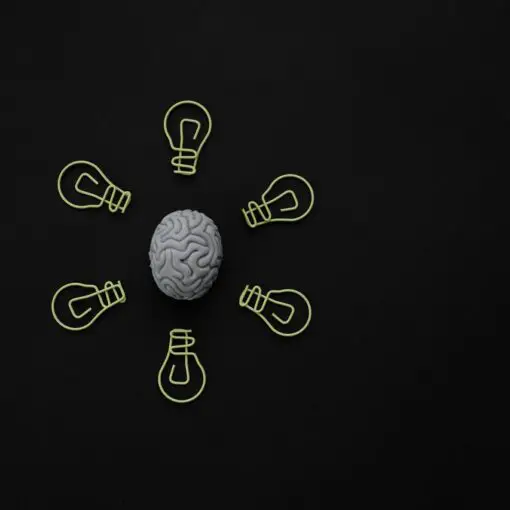Critical thinking can make life smoother and smarter, solving all kinds of academic, professional and everyday problems. But it’s not something you need to learn from a book. Humor can also be a fun and creative way to explore, practice and demonstrate critical thinking.
Read a bit more about critical thinking and jokes below and then test your wits and sharpen your brain while you have fun with our critical thinking jokes.
Why do I need critical thinking?
Sometimes life seems extremely complicated and difficult to navigate. Especially in the modern world, there can be an overwhelming amount of information available, a range of different approaches we can take, and so many competing priorities that we’re torn constantly in in several different directions.
But how can we determine which pieces of information are relevant? Which approach would make most sense? Or what really belongs at the top of the priority list? Critical thinking can provide some of the answers.
Critical thinking skills are like good headlights, strong brakes and steering, and effective seatbelts in a car. They allow you to see the path ahead more clearly even when it’s dark, to stop quickly and change direction suddenly if needed, and to minimize injury in a crash.
What are critical thinking skills?
Critical thinking includes a whole range of skills, competences and attitudes. As a general but not exhaustive guide, here are some of the most important:
- Analysis
- Inference
- Evaluation
- Decision-making
You cannot learn critical thinking by simply reading a particular book. Acquiring the relevant skills requires you to actually practice critical thinking. Jokes and humor are simple, accessible and fun, making them a good place to start!
Where do jokes and critical thinking come together?
Humor and critical thinking are linked in many ways.
Firstly, some jokes require critical thinking in order to be understood. This is true for pun-based humor and other word-plays, or for humorous riddles. If you can’t think critically, these kinds of jokes may be lost on you.
Secondly, developing and telling a joke can have many parallels to the process of applying critical thinking to a problem. A good critical thinker won’t stop at the obvious or simplest explanation, but will explore many possible explanations and dig for the absolute truth.
This is the same way that a good comedian sees the world and develops jokes. Both search for some deep, unusual or hidden insight and then test it.
Thirdly, critical thinking can be an active part of joke development. In observational comedy, this might mean examining an ordinary situation through a critical thinking lens to identify an amusing hidden aspect or surprising consequence. Parenting, dating and the working environment are all rich mines for observational humor.
In absurdist comedy, deduction or inference might be taken to an extreme, “proving” something which is actually utterly false and ridiculous. (Think about the scene in Monty Python and the Holy Grain where the villagers are lobbying Sir Bedevere to burn a witch, and he sets them a series of bizarre deductive questions, leading to an absurd “witch test” …)
Finally, humor can be used to encourage learning of critical thinking. When an idea or piece of information is funny, it is often both more accessible and more memorable. Jokes may also describe real-life situations where it matters whether a person thinks clearly or not and their failure to do so is often the punchline.
Now, let’s take a look at a few examples of critical thinking jokes…
1. Word-play
Doctor: I think your DNA is backwards.
ME: …And?
Comment
This simple word-play joke requires the listener to think about the spelling of DNA, and then apply the instruction “backwards” to its letters to form the word “and”.
2. Observational humor
Do you ever watch a movie that you saw as a kid and suddenly realize that you had no idea what was going on when you first watched it?
Watership Down is not a happy cartoon about cute, fluffy bunnies. It’s Reservoir Dogs, Platoon and The Seventh Seal all rolled into one and set in rabbit world…
…and Pretty Woman is not some simple “girl meets boys” hearts and flowers romance. It’s just a week in the life of a rich guy who hires a prostitute.
How young was I that I ever believed in either of those?! And where on earth were my parents…?
Then there’s the movies you were never allowed to watch as a kid even though their titles sounded like so much good, harmless fun. What a shock, or a disappointment, when you were finally old enough to see them and found…
… Blade Runner was not a film about a man running with scissors…
… the aforementioned Reservoir Dogs is not about pets learning to swim …
… and where was the robot fruit I’d always expected in ‘A Clockwork Orange’..?
Comment
This type of joke takes a fairly universal experience (finding out that movies encountered in childhood are radically different than expected) and plays upon credible potential misunderstandings of titles or presentation from a child’s perspective.
3. Critical thinking gone wrong…
Two hunters have been out together in the woods all morning. Suddenly, one of them clutches his heart and collapses on the ground. He’s not breathing and he has no pulse. His friend pulls out a phone and calls 911.
“I think my friend is dead!” he tells the operator urgently. “What should I do now?”
“Calm down,” the operator tells him. “First, let’s make sure your friend is actually dead.”
After a few seconds silence, the operator hears a shot. Then the guy returns to the phone and says, “OK, now what?”
Comment
This joke illustrates the danger of failing to apply critical thinking. The operator may have clearly intended the man to check his friend for signs of life, but their words were ambiguous… The man with the gun completely failed to analyze and evaluate the most likely meaning of the operator’s instruction and chose the most radical interpretation…
A final word…
We hope you have enjoyed our critical thinking jokes. Next time you watch a stand-up comedian or your favorite comedy show, consider the jokes and see if you can spot any critical thinking parallels and insights.





